Planting Melons Home Garden: Dreaming of biting into a juicy, homegrown melon this summer? I know I am! There’s nothing quite like the sweet, refreshing taste of a melon you’ve nurtured from seed to fruit right in your own backyard. But let’s be honest, growing melons can sometimes feel like a daunting task. That’s where these simple, yet effective, DIY tricks and hacks come in!
Melons have a rich history, cultivated for centuries across various cultures. From ancient Egypt, where they were found in tombs, to the elaborate melon varieties developed in Asia, these fruits have always been prized for their sweetness and nutritional value. Today, the desire to grow our own food, connect with nature, and enjoy the unparalleled flavor of homegrown produce is stronger than ever.
Many gardeners shy away from planting melons home garden because they believe it requires vast amounts of space or specialized knowledge. But fear not! I’m here to debunk those myths. Whether you have a sprawling garden or a small balcony, I’ll share easy-to-follow techniques and clever DIY solutions that will help you successfully grow delicious melons, no matter your experience level. Get ready to transform your garden into a melon paradise!
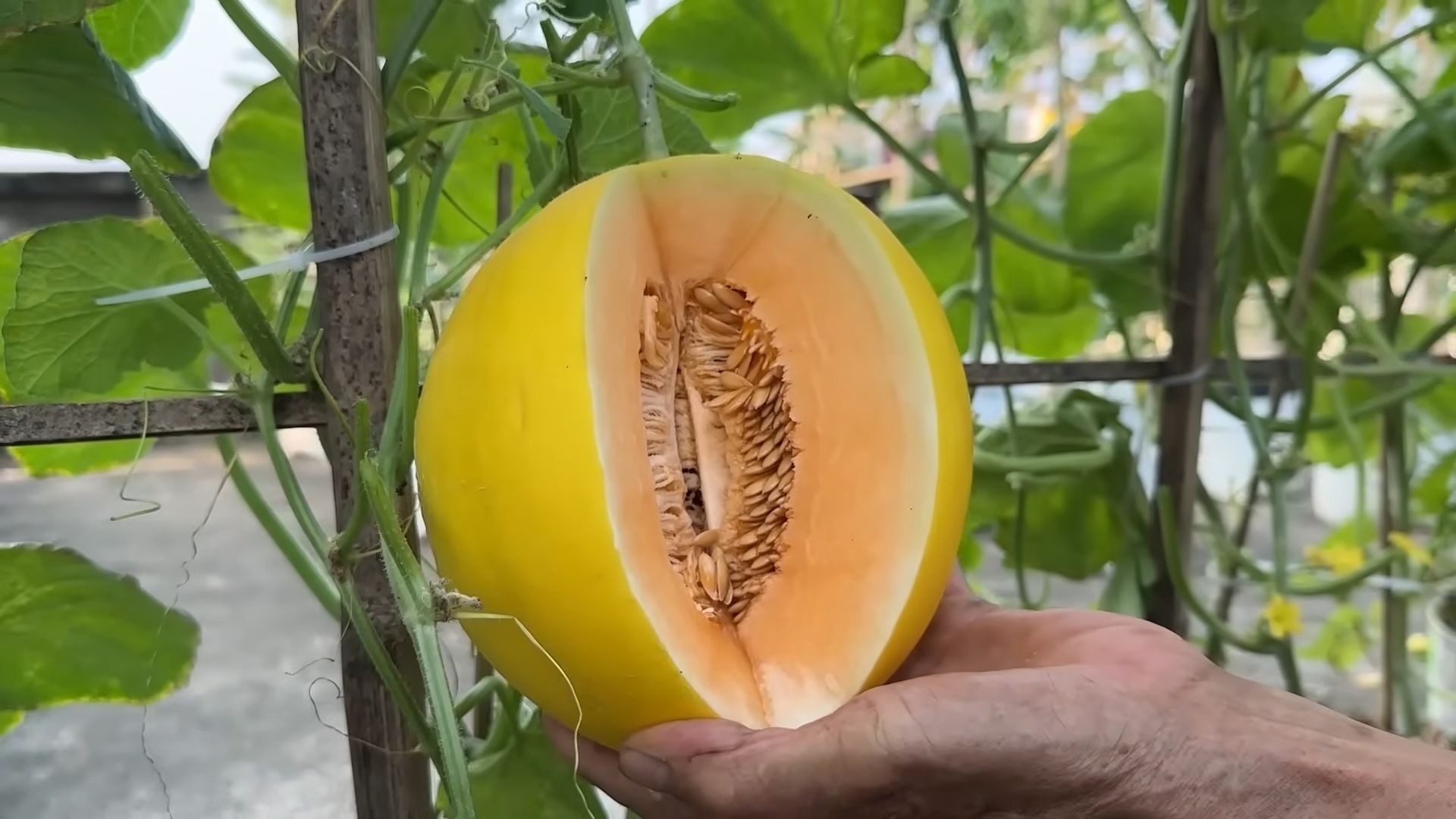
Planting Melons: A Beginner’s Guide to a Sweet Harvest
Okay, melon lovers, let’s get down to business! Growing your own melons can seem a little intimidating, but trust me, it’s totally doable, and the taste of a homegrown melon is *unbeatable*. I’m going to walk you through everything you need to know to successfully plant and nurture your own juicy melons.
Choosing Your Melon Variety
Before we even think about dirt, we need to pick our melon! There are so many delicious options, so consider your space, climate, and personal preferences.
* Watermelons: These guys need a lot of space! Think sprawling vines. Popular varieties include ‘Sugar Baby’ (smaller and earlier), ‘Crimson Sweet’ (classic flavor), and ‘Jubilee’ (large and oblong).
* Cantaloupes: A bit more manageable than watermelons, cantaloupes are known for their sweet, orange flesh. ‘Hales Best Jumbo’ and ‘Athena’ are reliable choices.
* Honeydew Melons: These have a smooth, pale green rind and sweet, light green flesh. ‘Honeycrisp’ and ‘Temptation’ are good options.
* Specialty Melons: Don’t be afraid to experiment! There are Galia melons, Charentais melons, and even Korean melons, each with unique flavors and textures.
Things to consider when choosing:
* Days to maturity: This is how long it takes from planting to harvest. Choose varieties that fit your growing season.
* Space requirements: Make sure you have enough room for the vines to spread.
* Disease resistance: Look for varieties that are resistant to common melon diseases.
* Your taste preferences: Ultimately, you want to grow melons you’ll actually enjoy eating!
Preparing Your Melon Patch
Melons are sun-loving, nutrient-hungry plants. So, let’s get their home ready!
* Sunlight: Melons need at least 6-8 hours of direct sunlight per day. Choose a spot in your garden that gets plenty of sunshine.
* Soil: Melons thrive in well-drained, fertile soil. Amend your soil with plenty of compost or well-rotted manure. This will improve drainage, add nutrients, and help retain moisture.
* Soil pH: Melons prefer a slightly acidic soil pH of 6.0 to 6.8. You can test your soil pH with a home test kit or send a sample to your local extension office.
* Spacing: Give your melon plants plenty of room to grow. Watermelons need the most space (4-6 feet between plants), while cantaloupes and honeydews can be spaced closer together (2-3 feet).
* Raised Beds (Optional): If you have heavy clay soil, consider planting your melons in raised beds. This will improve drainage and warm the soil more quickly in the spring.
Starting Your Melon Seeds (Indoors or Direct Sowing)
You have two options for starting your melon plants: starting seeds indoors or direct sowing them in the garden.
Starting Seeds Indoors (Recommended for Cooler Climates)
Starting seeds indoors gives you a head start on the growing season, especially if you live in a cooler climate with a shorter growing season.
1. Timing: Start your melon seeds indoors about 3-4 weeks before the last expected frost.
2. Containers: Use peat pots or biodegradable pots. Melons don’t like to have their roots disturbed, so these pots can be planted directly into the ground, minimizing transplant shock.
3. Potting Mix: Use a seed-starting mix that is lightweight and well-draining.
4. Sowing: Sow 2-3 seeds per pot, about 1/2 inch deep.
5. Watering: Water gently to moisten the soil, but don’t overwater.
6. Warmth: Melons need warm temperatures to germinate (70-80°F). Use a heat mat to provide bottom heat.
7. Light: Once the seeds germinate, provide plenty of light. A sunny windowsill or grow lights will work.
8. Thinning: Once the seedlings have a few true leaves, thin them to one plant per pot. Choose the strongest seedling and snip off the others at the soil line.
9. Hardening Off: Before transplanting your seedlings into the garden, you need to harden them off. This means gradually exposing them to outdoor conditions over a period of 7-10 days. Start by placing them in a sheltered spot for a few hours each day, gradually increasing the amount of time they spend outdoors.
Direct Sowing (Suitable for Warmer Climates)
If you live in a warmer climate with a long growing season, you can direct sow your melon seeds directly into the garden.
1. Timing: Wait until the soil has warmed to at least 70°F before direct sowing.
2. Sowing: Sow seeds about 1 inch deep and 2-3 feet apart, depending on the variety.
3. Watering: Water gently to moisten the soil.
4. Thinning: Once the seedlings emerge, thin them to one plant per hill.
Transplanting Your Melon Seedlings
Whether you started your seeds indoors or purchased seedlings from a nursery, transplanting them into the garden is a crucial step.
1. Timing: Transplant your melon seedlings after the last expected frost and when the soil has warmed to at least 60°F.
2. Preparation: Dig a hole that is slightly larger than the root ball of the seedling.
3. Planting: Gently remove the seedling from its pot and place it in the hole. If you used peat pots, make sure to tear off the top edge of the pot to prevent it from wicking moisture away from the roots.
4. Backfilling: Backfill the hole with soil and gently firm it around the base of the plant.
5. Watering: Water thoroughly after transplanting.
6. Mulching: Apply a layer of mulch around the plants to help retain moisture, suppress weeds, and warm the soil. Black plastic mulch is particularly effective for warming the soil in cooler climates.
Caring for Your Melon Plants
Once your melon plants are in the ground, they need regular care to thrive.
* Watering: Melons need consistent moisture, especially during fruit development. Water deeply and regularly, especially during dry spells. Avoid overhead watering, which can promote fungal diseases. Drip irrigation is an excellent way to water melons.
* Fertilizing: Melons are heavy feeders and benefit from regular fertilization. Use a balanced fertilizer (e.g., 10-10-10) or a fertilizer specifically formulated for melons. Apply fertilizer according to the package directions. You can also side-dress your plants with compost or well-rotted manure.
* Weeding: Keep your melon patch free of weeds, which can compete with the plants for nutrients and water. Hand-pull weeds or use a hoe to cultivate the soil. Be careful not to damage the melon roots.
* Pest Control: Melons can be susceptible to various pests, including aphids, squash bugs, and cucumber beetles. Monitor your plants regularly for signs of pests and take action promptly. Insecticidal soap, neem oil, and row covers can be effective for controlling pests.
* Disease Control: Melons can also be susceptible to diseases, such as powdery mildew, downy mildew, and fusarium wilt. Choose disease-resistant varieties and practice good sanitation to prevent diseases. Remove any infected leaves or plants promptly. Fungicides can be used to control fungal diseases.
* Pollination: Melons need to be pollinated to produce fruit. Bees are the primary pollinators of melons. If you don’t have enough bees in your garden, you may need to hand-pollinate your melon flowers. To hand-pollinate, use a small paintbrush to transfer pollen from the male flowers to the female flowers. Female flowers have a small fruit behind the flower, while male flowers do not.
* Vine Training (Optional): You can train your melon vines to grow in a specific direction or to climb a trellis. This can help save space and improve air circulation.
Harvesting Your Melons
Harvesting your melons at the right time is crucial for getting the best flavor and texture.
* Watermelons: Watermelons are ripe when the tendril closest to the fruit turns brown and dry, the underside of the melon (where it rests on the ground) turns yellow, and the melon sounds hollow when you thump it.
* Cantaloupes: Cantaloupes are ripe when they slip easily from the vine with a gentle tug. The skin will also turn from green to tan, and the melon will have a sweet aroma.
* Honeydew Melons: Honeydew melons are ripe
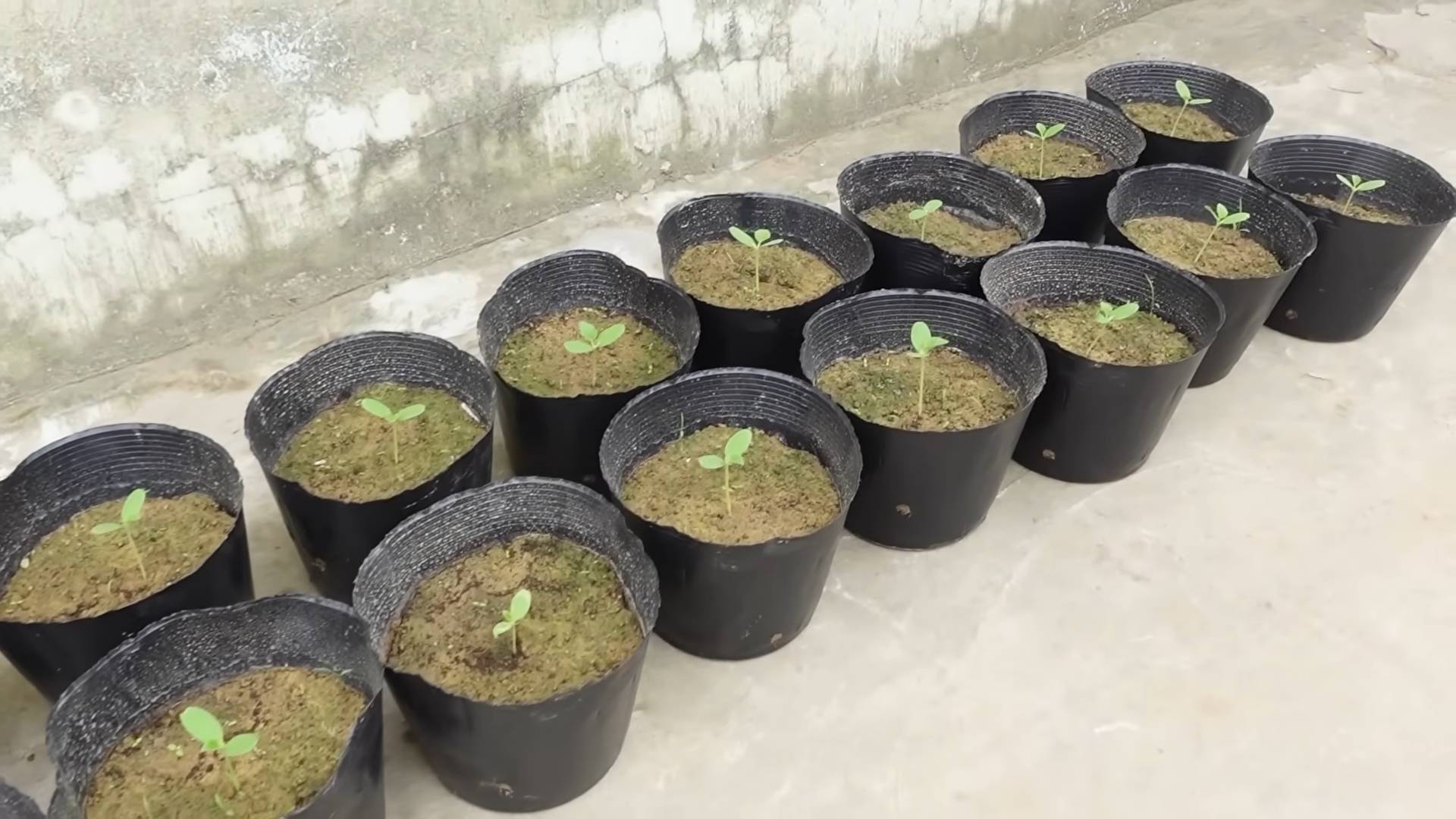
Conclusion
So, there you have it! Mastering the art of planting melons in your home garden is not only achievable but also incredibly rewarding. We’ve walked through the essential steps, from selecting the right varieties to nurturing your seedlings and ensuring a bountiful harvest. But why should you dedicate your time and effort to this endeavor? The answer lies in the unparalleled flavor and freshness you simply can’t replicate with store-bought melons. Imagine biting into a juicy, sun-ripened watermelon or cantaloupe, bursting with sweetness and grown with your own two hands. That’s the magic of home gardening, and it’s especially potent when it comes to melons.
This DIY trick, planting melons in your home garden, is a must-try for several reasons. First, you have complete control over the growing process. You can choose organic methods, avoiding harmful pesticides and herbicides. Second, you can select melon varieties that are best suited to your local climate and personal preferences. Tired of the bland, mass-produced melons at the grocery store? Grow heirloom varieties with unique flavors and textures! Third, the satisfaction of harvesting your own food is immeasurable. It’s a connection to nature and a sense of accomplishment that’s hard to beat.
But don’t stop there! Experiment with different melon varieties. Try growing honeydew, crenshaw, or even specialty melons like the Korean melon. Consider companion planting to deter pests and improve soil health. Marigolds, for example, are known to repel nematodes, while basil can attract beneficial insects. You can also explore different trellising methods to save space and improve air circulation. Vertical gardening is a great option for smaller gardens.
Ready to embark on your melon-growing adventure? We encourage you to give this DIY trick a try. Start small, learn as you go, and don’t be afraid to make mistakes. Gardening is a journey, and every season brings new lessons. And most importantly, share your experience with us! We’d love to hear about your successes, challenges, and favorite melon varieties. Post photos of your melon patch, share your tips and tricks, and inspire others to discover the joy of growing their own food. Let’s create a community of melon enthusiasts!
Don’t wait, start planning your melon garden today!
Frequently Asked Questions (FAQ)
What is the best time to start planting melons?
The ideal time to start planting melons depends on your local climate and the specific melon variety you’re growing. Generally, melons are warm-season crops and require a long growing season with plenty of sunshine. In most regions, you should start seeds indoors about 4-6 weeks before the last expected frost. Once the soil has warmed up to at least 65°F (18°C), you can transplant the seedlings outdoors. If you live in a warmer climate with a longer growing season, you can direct sow melon seeds directly into the garden after the last frost. Check your local extension office or seed packet for specific recommendations for your area. Remember that soil temperature is crucial; melons won’t thrive in cold soil. Using black plastic mulch can help warm the soil up faster in the spring.
What kind of soil do melons need?
Melons thrive in well-drained, fertile soil that is rich in organic matter. The ideal soil pH is between 6.0 and 7.0. Before planting, amend your soil with compost, aged manure, or other organic materials to improve drainage and fertility. If your soil is heavy clay, consider adding sand or perlite to improve drainage. Melons are heavy feeders, so it’s also a good idea to incorporate a slow-release fertilizer into the soil at planting time. A soil test can help you determine the specific nutrient needs of your soil. Avoid planting melons in compacted or waterlogged soil, as this can lead to root rot and other problems.
How much sun do melons need?
Melons need at least 6-8 hours of direct sunlight per day to thrive. Choose a planting location that receives full sun throughout the day. If your garden is shaded for part of the day, try to plant your melons in the sunniest spot. Insufficient sunlight can result in poor fruit production and smaller, less flavorful melons.
How often should I water my melon plants?
Melons need consistent moisture, especially during fruit development. Water deeply and regularly, especially during hot, dry weather. Aim to keep the soil consistently moist but not waterlogged. Avoid overhead watering, as this can promote fungal diseases. Drip irrigation or soaker hoses are the best way to water melons, as they deliver water directly to the roots. Mulching around the plants can also help retain moisture in the soil. Reduce watering as the melons ripen to prevent them from splitting.
What are some common pests and diseases that affect melons?
Melons can be susceptible to a variety of pests and diseases, including aphids, squash bugs, cucumber beetles, powdery mildew, and fusarium wilt. Regularly inspect your plants for signs of pests or diseases. Use organic pest control methods, such as insecticidal soap or neem oil, to control pests. Practice good sanitation by removing any diseased leaves or fruit. Choose disease-resistant melon varieties whenever possible. Crop rotation can also help prevent soilborne diseases.
How do I know when my melons are ripe?
Determining when a melon is ripe can be tricky, but there are a few telltale signs to look for. For watermelons, look for a dull, rather than shiny, rind and a yellowish spot on the underside where the melon rested on the ground. Thumping the watermelon should produce a deep, hollow sound. For cantaloupes, the stem should slip easily from the fruit when it’s ripe. The melon should also have a fragrant aroma. Honeydew melons are ripe when the rind turns a creamy yellow color and the blossom end is slightly soft.
Can I grow melons in containers?
Yes, you can grow melons in containers, but you’ll need to choose a large container (at least 20 gallons) and select a compact or bush-type melon variety. Make sure the container has good drainage. Use a high-quality potting mix and fertilize regularly. Container-grown melons may require more frequent watering than those grown in the ground. Trellising the vines can help save space and improve air circulation.
What are some good companion plants for melons?
Companion planting can help deter pests, attract beneficial insects, and improve soil health. Good companion plants for melons include marigolds, basil, nasturtiums, radishes, and beans. Avoid planting melons near potatoes or other members of the nightshade family, as they can compete for nutrients.
How can I improve the sweetness of my melons?
Several factors can influence the sweetness of melons, including sunlight, water, and soil fertility. Make sure your melons receive plenty of sunlight and water them consistently, especially during fruit development. Avoid overwatering as the melons ripen. Fertilize regularly with a balanced fertilizer. Some gardeners also recommend pinching off the growing tips of the vines to encourage the plant to focus its energy on fruit production.
What do I do if my melon plants are not producing fruit?
There are several reasons why your melon plants may not be producing fruit. Insufficient sunlight, poor pollination, and nutrient deficiencies are all common culprits. Make sure your plants are receiving at least 6-8 hours of direct sunlight per day. Hand-pollinate the flowers if you’re not seeing any bee activity. Fertilize regularly with a balanced fertilizer. Check the soil pH and amend if necessary. Also, make sure your plants are not stressed by pests or diseases.

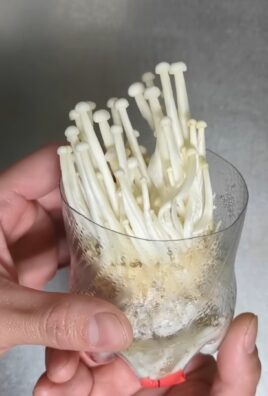
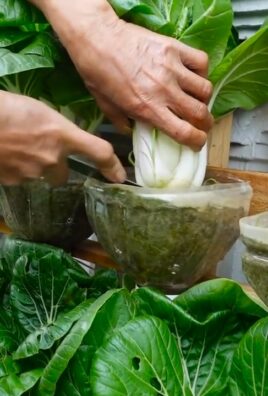
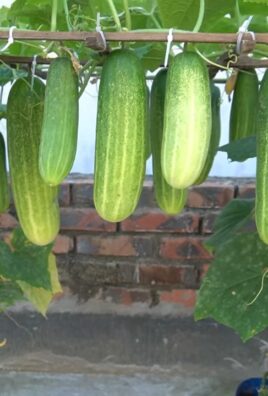
Leave a Comment